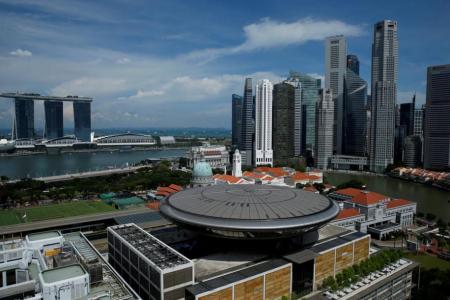Dealing with old issues in the new year
Flash estimates of 2016's Q4 growth looks robust, but economists are still worried
What do you think was the most surprising thing that happened last week?
It is a new year filled with new hopes and beginnings, but some things just serve to remind us that our fears and worries may continue to weigh on our mood.
Horrific news of a mass shooting in a nightclub in Istanbul, Turkey, started off 2017. At least 39 were killed and over 70 injured.
While the Islamic State in Iraq and Syria has claimed responsibility for the attack, the gunman is still on the loose. Terrorism is still a force to be reckoned with.
Members of Singapore's Raffles Country Club (RCC) had a big shock when the Government said it would acquire the club's entire 143ha plot of land for the High Speed Rail that will connect Singapore with Kuala Lumpur. RCC will have to hand over the land by July 31, 2018.
But the biggest surprise for many here was when flash estimates of the Republic's economic growth in the final quarter of 2016 came out looking robust.
Very, very robust.
Why is this a big deal?
Singapore has been grappling with low growth for a few quarters now.
The longer this wore on, the more observers started to question the strength of its economy.
Then over the past year, external factors kept lobbing curveballs at its export-dependent economy.
The Q4 2016 flash data (based largely on the first two months' figures) show the economy grew 9.1 per cent quarter-on-quarter, or 1.8 per cent year-on-year.
But the fact is, we need to rethink the direction Singapore’s economy is heading, and it is better to steer it from within than leave it to external forces.
With upward revisions to the earlier quarters' numbers, last year's full-year growth may come in at 1.8 per cent - well above forecasts.
So the economy has beaten expectations, it seems.
This suggests the economy still has some strength in it and may just be turning the corner.
Did anyone see it coming?
No. Neither the Government nor private sector economists expected it.
Just a little over a month ago, the Ministry of Trade and Industry said last year's full-year growth will likely be from 1 per cent to 1.5 per cent.
Economists surveyed in an earlier official poll had slashed their forecasts for 2016 growth to 1.4 per cent.
Should anyone be worried? Excited, maybe?
We would normally expect that this overshooting of expectations would call for the proverbial "popping of champagne", but economists were not at all impressed.
In fact, they remain worried.
This is because most of the growth boost came from manufacturing, specifically, the volatile chemical and pharmaceutical industries.
Moreover, the manufacturing sector is, in fact, in a "policy-induced structural decline", as one economist put it.
So whatever spurt the economy enjoyed this time, it is still not seen as a steady-enough growth engine.
Meanwhile, services - a sector that has received much policy attention and support - did not fare too well in the past quarter.
So the jury is still out on which sector is adept enough to take the front seat in driving economic growth.
But it would be remiss of us to brush off the good news in the data. It did give us a nice surprise at the start of the year, after all.
And the growth surprise also gives policymakers some breathing space. Some say the odds of the central bank re-centring the Singapore dollar nominal effective exchange rate policy band have decreased.
This means it will likely still see prices as stable enough to ensure economic growth.
What happens now?
We wait for more indications on how the economy has fared in December, because these latest numbers are largely based on October and November's data.
If manufacturing continued to grow, we will see signs of it in the December industrial production numbers, due to be released on Jan 26.
December's data for non-oil domestic exports will also be indicative of the year-end strength of external demand for Singapore's exports.
The trade figures will be out on Jan 17.
Retail sales for November, to be unveiled on Friday, and December's consumer price index, out on Jan 23, will give the "consumer demand" side of the story - in this case, for the year-end festive season.
Taken together, the Q4 economic report card will show how well the economy fared at the end of 2016.
But the fact is, we need to rethink the direction Singapore's economy is heading, and it is better to steer it from within than leave it to external forces.
So the Committee on the Future Economy report, due later this month, and the Budget 2017 statement, out on Feb 20, are the bigger, and key, policy statements we await.
This article appeared in the weekend edition of The Business Times.
Get The New Paper on your phone with the free TNP app. Download from the Apple App Store or Google Play Store now



